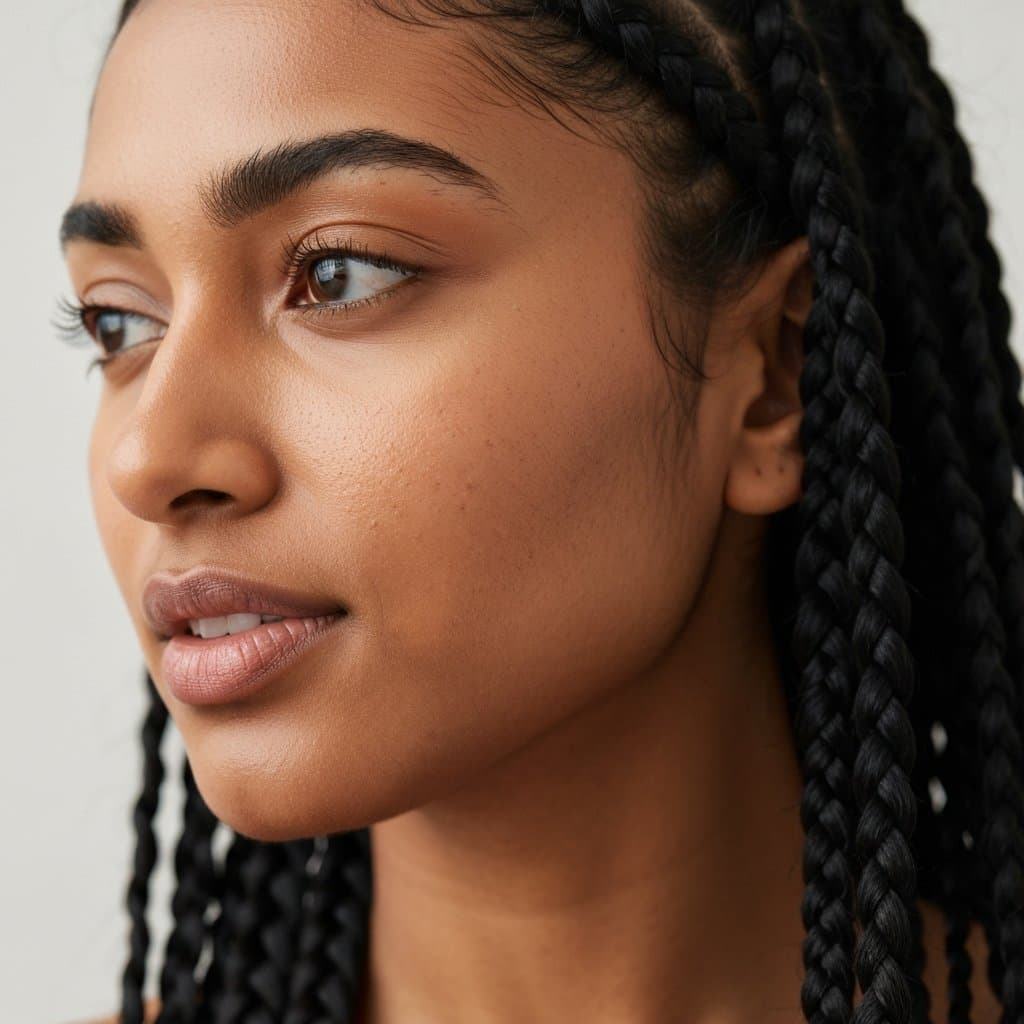Knotless Braids: The Ultimate Protective Style for Natural Hair | A Complete Guide
Unveiling the Hype: Why Knotless Braids Are Revolutionizing Natural Hair Care
In the ever-evolving world of natural hair, one style has risen above the rest to claim its crown as the go-to protective option: knotless braids. This modern take on the classic box braid has captured the hearts and scalps of millions, offering a unique blend of style, comfort, and hair health. Unlike their traditional counterparts, knotless braids begin with your natural hair and gradually incorporate braiding hair, eliminating the tight, bulky knot at the root that can cause tension and breakage. This simple yet groundbreaking change has transformed the braiding experience, making it a truly protective style that nurtures your hair while looking effortlessly chic.
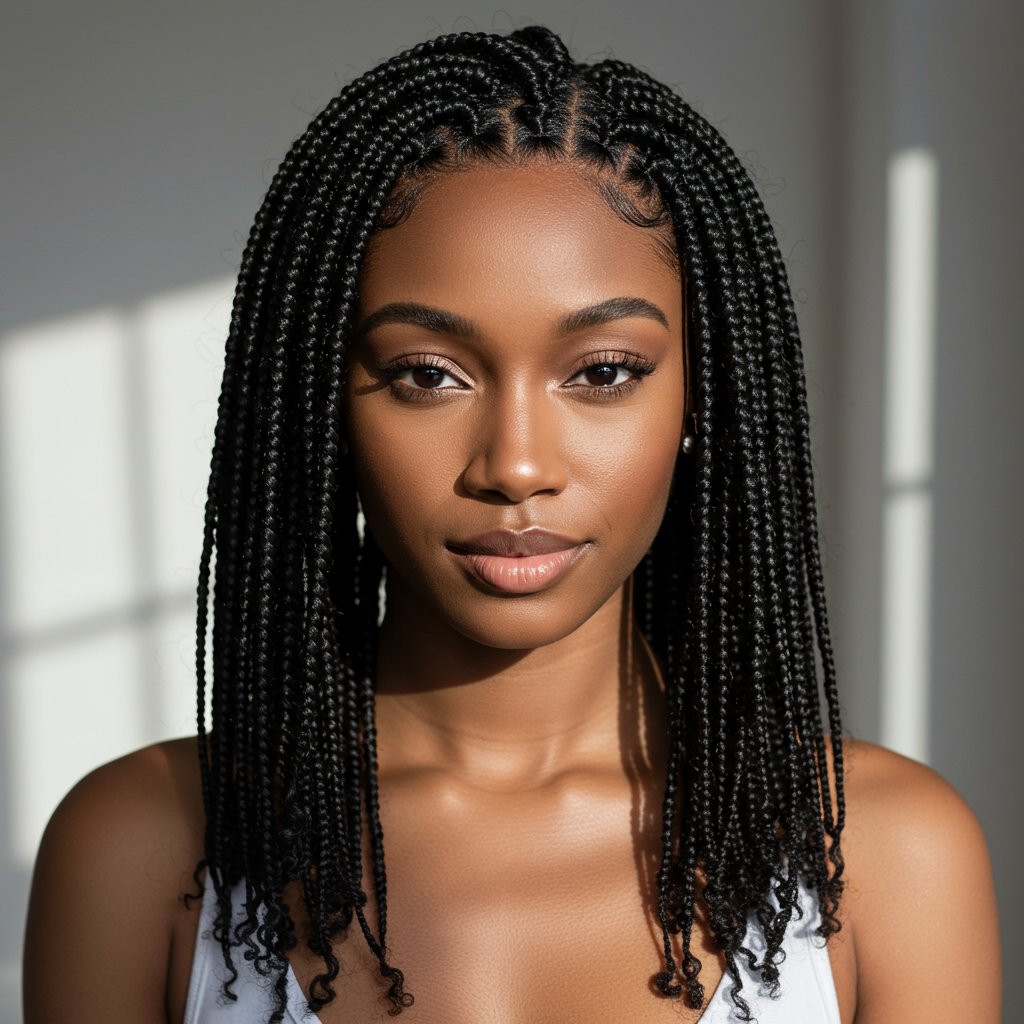
This comprehensive guide will delve deep into the world of knotless braids, exploring why they are considered the ultimate protective style for natural hair. We will break down the numerous benefits, from scalp health to hair growth, and walk you through the entire process, from preparation to takedown. Whether you're a seasoned braid enthusiast or considering them for the first time, this article will provide you with all the information you need to make an informed decision and rock your knotless braids with confidence. Get ready to discover how this innovative technique can help you achieve your hair goals while serving stunning looks.
What Exactly Are Knotless Braids? The Modern Twist on a Classic Style
The fundamental difference between knotless braids and traditional box braids lies in the installation technique. Traditional box braids start by wrapping a small knot of braiding hair tightly around the base of a section of your natural hair. While this creates a secure and uniform look, this initial knot is often the source of significant tension, leading to scalp discomfort, tenderness, and in some cases, traction alopecia. Knotless braids, however, completely reimagine this starting point.
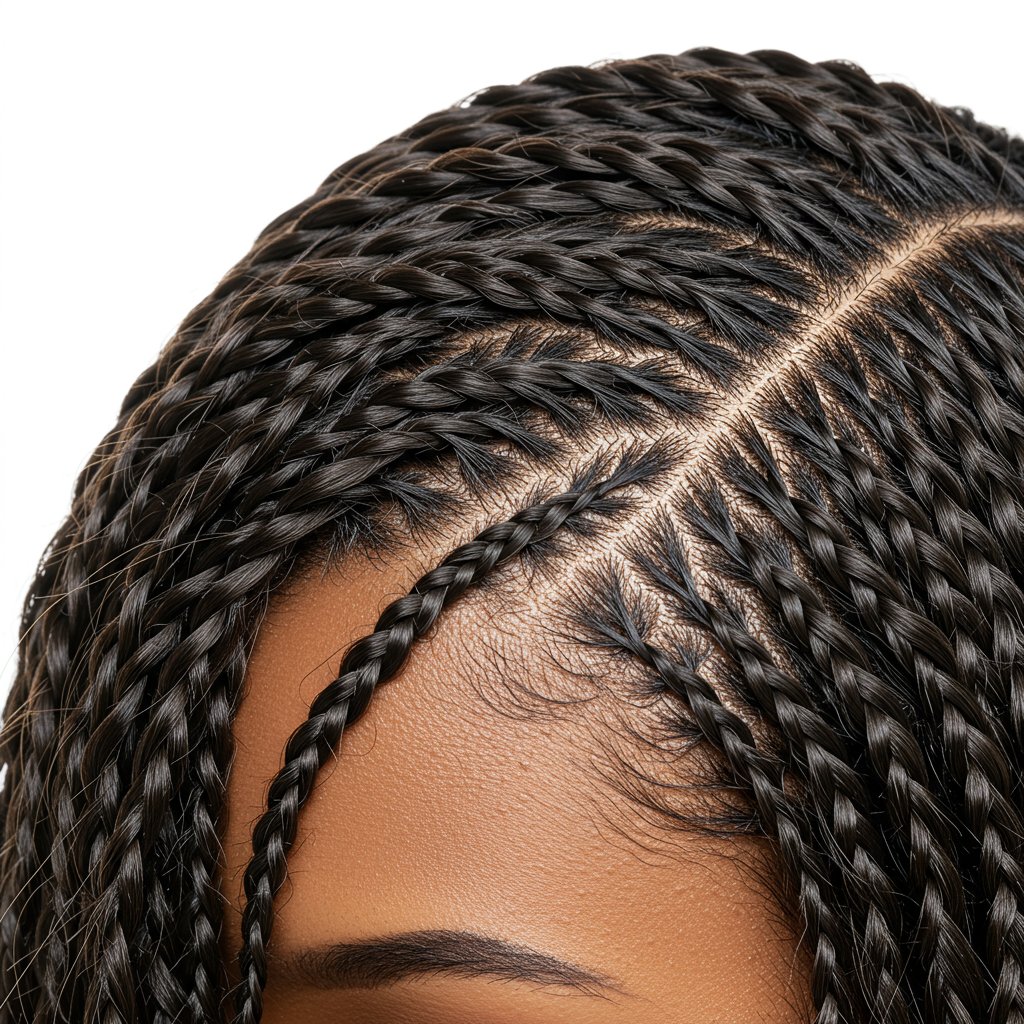
The Feed-In Method: A Gentler Approach
The magic of knotless braids is the 'feed-in' method. The stylist begins by braiding a small section of your natural hair first, just as you would a simple plait. Then, small pieces of braiding hair are gradually and seamlessly 'fed' into the braid as it moves down the hair shaft. This process creates a smooth, flat transition from your natural hair to the extension. The result is a braid that lays flat against the scalp, moves freely from day one, and places virtually no stress on the hair follicle. This gentle beginning is the primary reason why knotless braids are celebrated for being a healthier, more comfortable alternative.
Visual and Textural Differences
Visually, knotless braids offer a more natural and organic appearance. The seamless start makes it look as though the braids are growing directly from the scalp. This creates a sleek, less bulky root compared to the more pronounced grid of traditional box braids. The braids themselves are often lighter and have more flexibility and movement right after installation. You can pull them up into a ponytail or bun immediately without the typical pain or stiffness associated with new braids. This combination of a gentler technique and a more natural aesthetic is what makes knotless braids a superior choice for those prioritizing the long-term health of their hair and scalp.
The Unbeatable Benefits of Knotless Braids for Natural Hair Health
Beyond their stylish appearance, knotless braids offer a wealth of benefits that make them a premier choice for protecting natural hair. Their design philosophy centers on minimizing stress and maximizing hair health, allowing your hair to thrive while tucked away. This focus on preservation and growth is what truly sets them apart as a superior protective style.
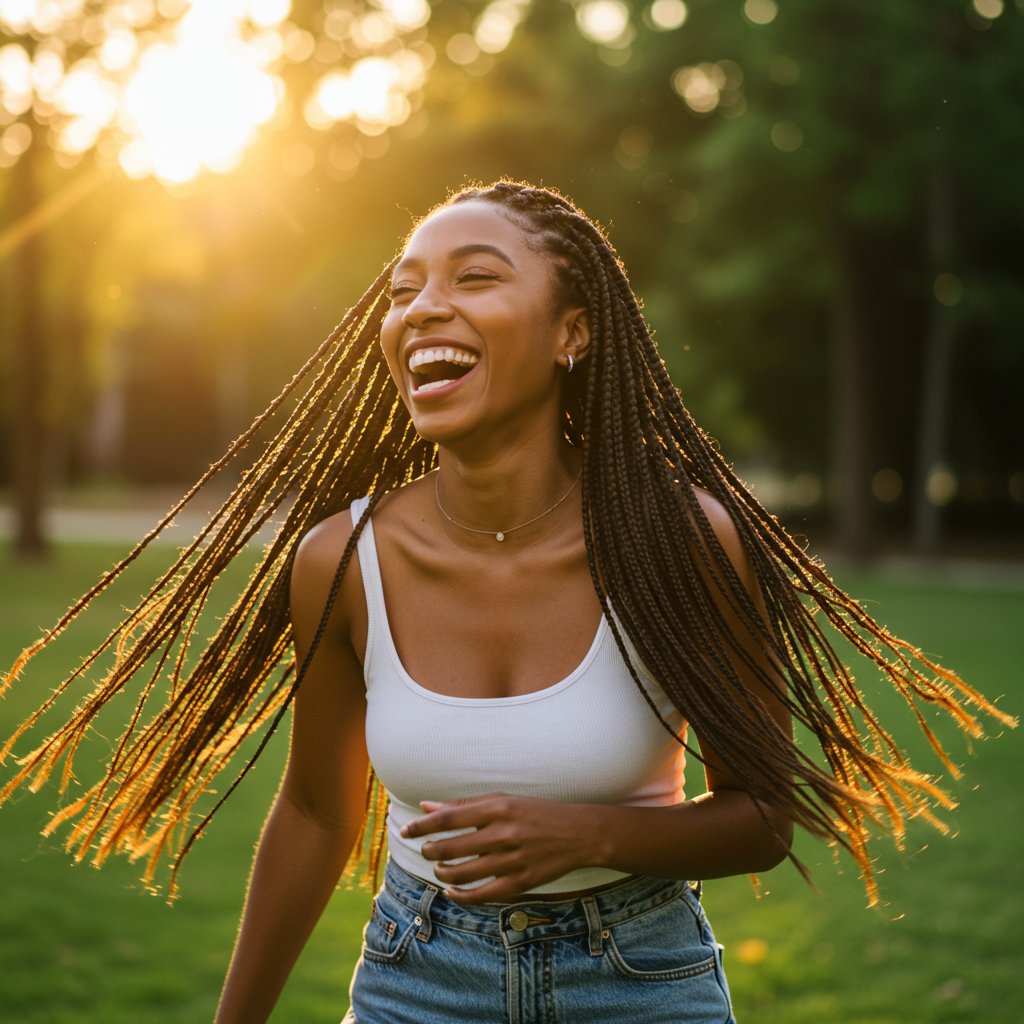
Tension-Free Scalp Care: Why Less is More
The most significant advantage of knotless braids is the dramatic reduction in scalp tension. Without the tight anchor knot at the root, your hair follicles are not subjected to the constant pulling that can lead to irritation, inflammation, and hair loss known as traction alopecia. This makes the style incredibly comfortable from the moment you leave the salon chair. Many wearers report a complete absence of the headaches, scalp soreness, and initial stiffness that often accompany traditional braids. This tension-free foundation also allows for better scalp access, making it easier to cleanse, moisturize, and treat your scalp, which is crucial for healthy hair growth.
Promoting Hair Growth and Length Retention
By shielding your natural hair from daily manipulation, environmental stressors, and styling damage, knotless braids create the ideal environment for length retention. Your ends are tucked safely within the braids, preventing split ends and breakage that can stunt growth. Because the style is so comfortable and low-tension, there's less risk of the follicle damage that can impede a healthy growth cycle. When combined with a consistent maintenance routine of moisturizing the scalp and hair, knotless braids can be a powerful tool in achieving your length goals. You're not just wearing a style; you're giving your hair a much-needed break to grow and flourish.
Unmatched Versatility and Styling Freedom
The lightweight and flexible nature of knotless braids opens up a world of styling possibilities from the very first day. Unlike traditional braids that require a 'settling' period, knotless braids can be styled immediately. High ponytails, elegant updos, chic half-up styles, and intricate buns are all achievable without pain or discomfort. This immediate versatility means you can switch up your look for any occasion, from a professional setting to a glamorous night out. The flat-laying base also contributes to a sleeker, more polished finish for any updo, making your styling efforts look even more refined.
The Knotless Braids Installation Process: What to Expect
Understanding the installation process can help you prepare for your appointment and ensure the best possible results. While it requires patience and a skilled stylist, the outcome is well worth the time invested. A professional installation is key to reaping all the health and style benefits.
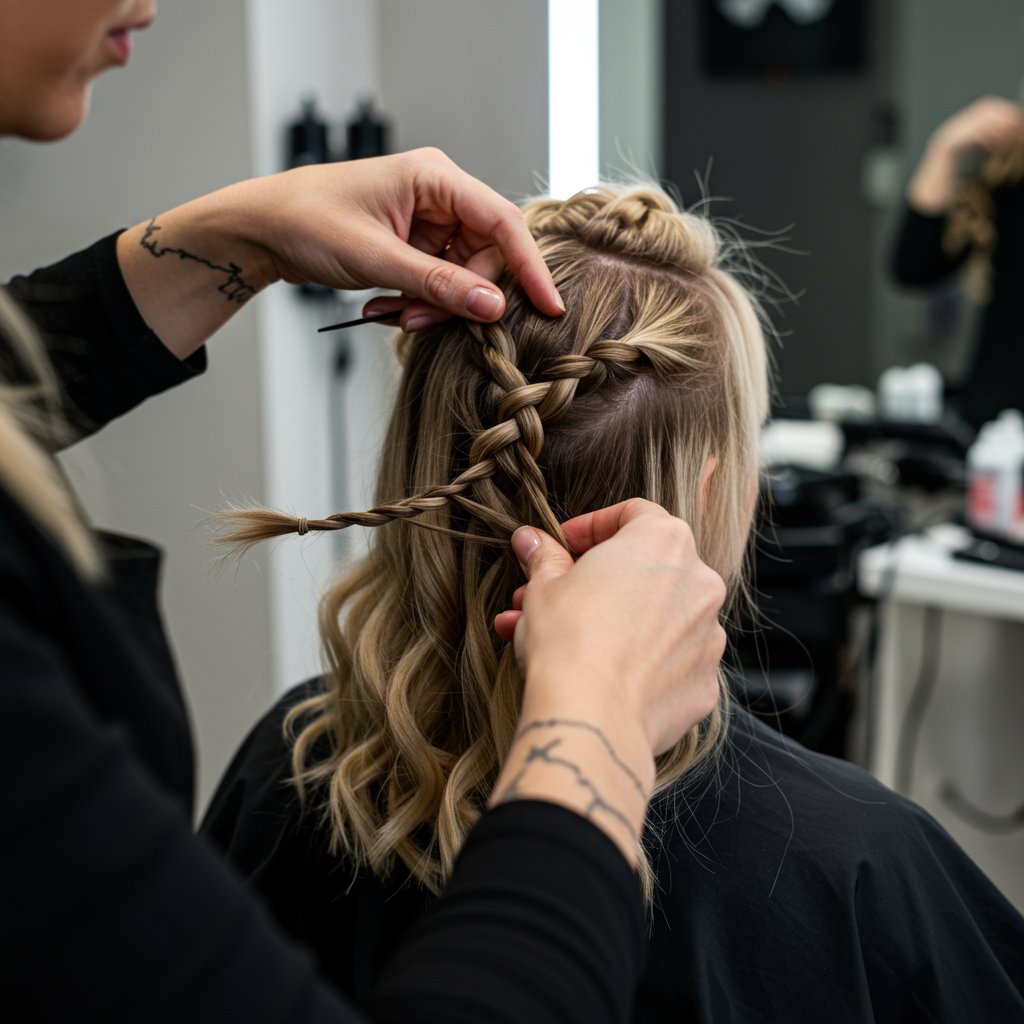
Preparing Your Natural Hair for Braiding
Proper preparation is the foundation of a successful and long-lasting protective style. Before your appointment, your hair should be thoroughly washed, deep-conditioned, and detangled. A clarifying shampoo can help remove any product buildup, ensuring the stylist has a clean canvas to work with. Following up with a deep conditioning treatment will infuse your strands with moisture, which is essential for keeping your hair healthy while it's braided. Finally, your hair should be completely detangled and stretched, typically via blow-drying on a low to medium heat setting. This makes the parting process smoother and helps the braids look neater and last longer.
The Feed-In Technique Explained
Once you're in the chair, the stylist will begin by creating precise parts according to the size of the braids you've chosen. For each braid, they will take a small section of your natural hair and start a simple three-strand plait. After a few links of braiding just your own hair, they will begin feeding in small, pre-stretched pieces of braiding hair. This is a meticulous process that requires skill to ensure the extension is added smoothly and evenly, without creating lumps or bumps. The stylist will continue adding small pieces of hair until the desired thickness is achieved, then continue braiding down to the ends. This technique is repeated across the entire head until the style is complete.
How Long Does It Take? Time Investment for Flawless Braids
The duration of a knotless braid installation varies significantly based on several factors: the size and length of the braids, the density of your hair, and the speed of the stylist. Generally, you can expect the appointment to last anywhere from 4 to 9 hours. Small or extra-long braids will be on the longer end of that spectrum, while medium or jumbo braids may take less time. While it is a significant time commitment, it's important not to rush the process. A skilled stylist who takes their time will ensure the braids are installed with proper tension and precision, which is crucial for the health of your hair and the longevity of the style.
Choosing the Right Hair and Size for Your Knotless Braids
The final look and feel of your knotless braids depend heavily on the type of braiding hair used and the size of the individual braids. Making the right choices here can impact everything from the style's weight and longevity to its overall aesthetic.
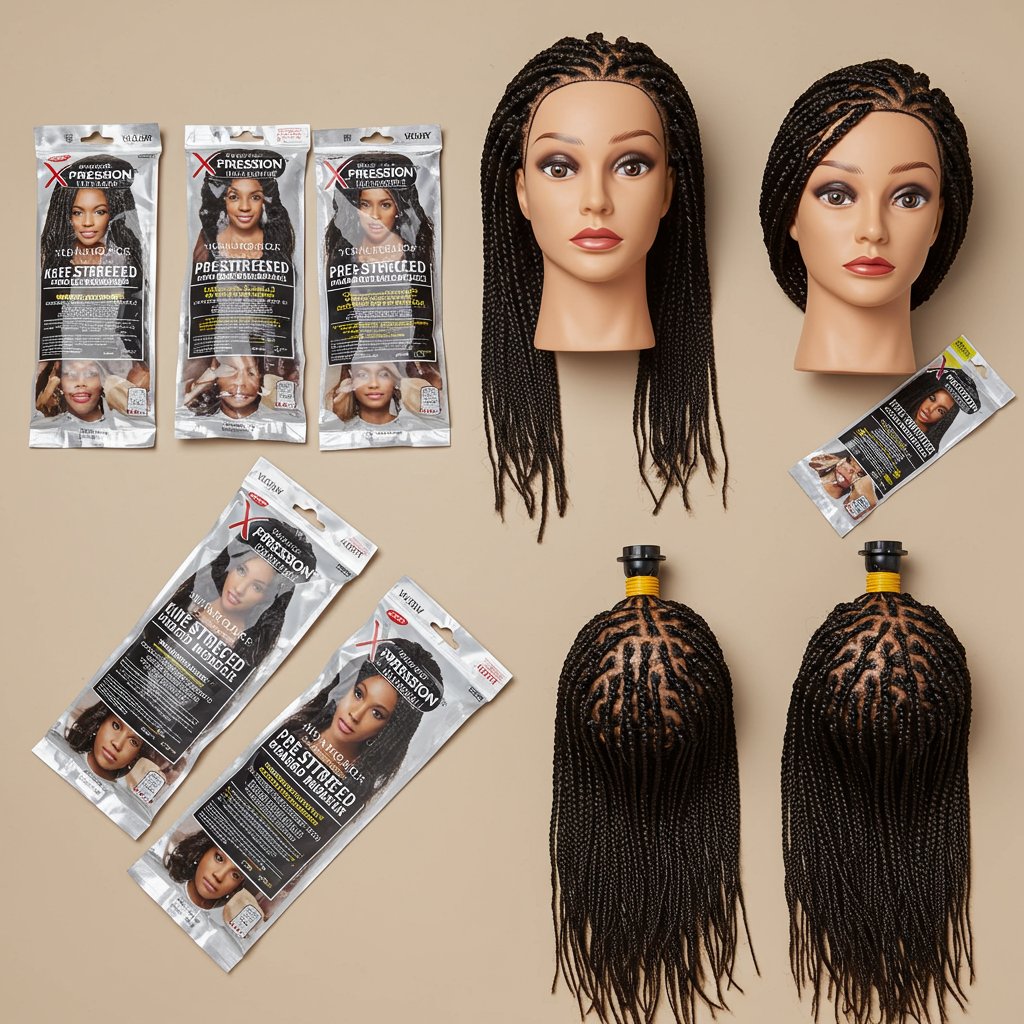
Synthetic Hair: The Industry Standard
The most commonly used hair for knotless braids is high-quality, pre-stretched synthetic Kanekalon fiber, with brands like X-Pression being a popular choice. Pre-stretched hair is ideal because it tapers at the ends, creating a more natural finish and reducing the installation time as the stylist doesn't have to stretch it themselves. Synthetic hair is lightweight, comes in a vast array of colors, and holds the style well. It's also budget-friendly and widely available. When selecting hair, ensure it is labeled as 'pre-stretched' for the best results.
Size Matters: From Micro to Jumbo Knotless Braids
The size of your braids is a personal preference that affects both the look and the maintenance of the style.- Small/Micro Braids: Offer a very full, long-lasting look that resembles loose strands of hair from a distance. However, they take the longest to install and take down and can potentially put more tension on the hair if not done carefully.
- Medium Braids: This is the most popular size, offering a perfect balance between installation time, longevity, and styling versatility. They are substantial enough to make a statement but not so large that they limit styling options.
- Large/Jumbo Braids: These make a bold fashion statement and have the quickest installation time. However, they tend not to last as long as smaller sizes and may place more weight on individual sections of hair. They are a great option for a shorter-term, high-impact look.
Mastering Knotless Braid Maintenance: A Guide to Longevity
Proper maintenance is key to keeping your knotless braids looking fresh and, more importantly, keeping your natural hair healthy underneath. A consistent routine will help you extend the life of your style and prevent scalp issues.
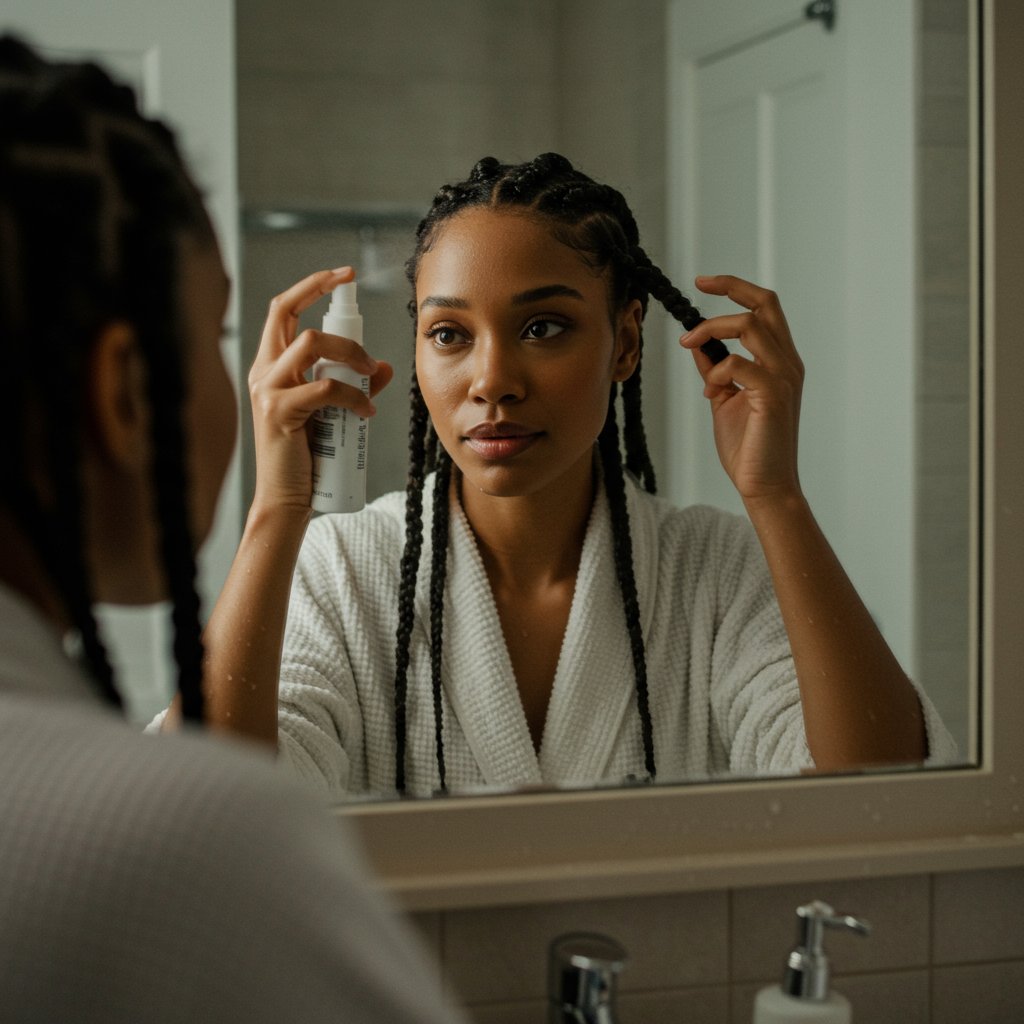
Scalp Care is Paramount
A healthy scalp is the foundation of healthy hair. Since knotless braids provide excellent access to your scalp, cleaning it is straightforward. Use a lightweight, sulfate-free shampoo diluted with water in a nozzle-tip bottle to apply it directly to the scalp. Gently massage with the pads of your fingers (not your nails) to lift dirt and debris, then rinse thoroughly. Do this every 2-3 weeks. In between washes, keep your scalp moisturized and soothed with a leave-in spray, light oil (like jojoba or grapeseed), or a specially formulated scalp serum. This prevents dryness, itching, and flaking.
Keeping the Braids Moisturized and Neat
While your hair is protected, it still needs moisture. Lightly mist your braids with a water-based leave-in conditioner or braid spray every few days to keep your natural hair hydrated. To combat frizz that can develop over time, apply a bit of mousse and tie your hair down with a silk or satin scarf for about 30 minutes. This will help smooth the flyaways and refresh the look of your braids. Avoid heavy creams or gels that can cause buildup and weigh the braids down.
Nighttime Care: The Secret to Longevity
How you protect your braids at night is one of the most critical factors in how long they last. Tossing and turning on a cotton pillowcase can cause friction, leading to frizz and moisture loss. Always protect your hair before bed. You can either tie your braids up in a high, loose bun (a 'pineapple') and cover it with a large satin bonnet or scarf, or you can sleep on a satin or silk pillowcase. This simple step will drastically reduce frizz, preserve moisture, and keep your braids looking neater for longer.
Frequently Asked Questions About Knotless Braids
Here are answers to some of the most common questions about getting and maintaining knotless braids.
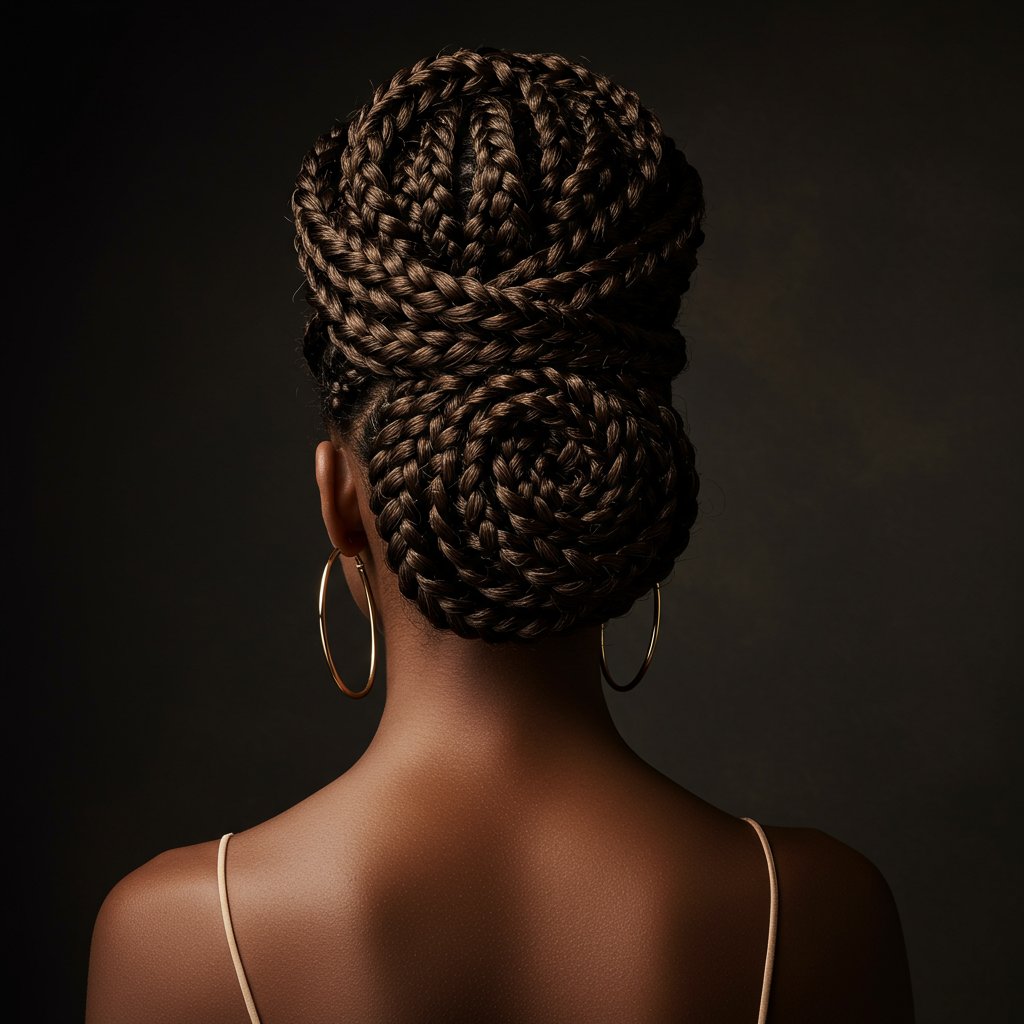
How long do knotless braids last?
With proper care, knotless braids can last between 4 to 7 weeks. It's generally not recommended to keep them in for longer than 8 weeks, as this can lead to matting of the new growth and potential breakage during the takedown process.Are knotless braids damaging to your hair?
When installed and maintained correctly, knotless braids are one of the least damaging protective styles available. The lack of a knot at the base significantly reduces tension on the hair follicles. Damage typically only occurs if the braids are installed too tightly, left in for too long, or removed improperly.Can I wash my hair with knotless braids?
Yes, you can and should wash your hair and scalp while wearing knotless braids. A clean scalp is essential for hair health. Focus on cleansing the scalp using a diluted shampoo with a nozzle applicator every 2-3 weeks, and rinse thoroughly to prevent buildup.How much do knotless braids typically cost?
Cost varies widely depending on your location, the stylist's experience, and the size and length of the braids. You can generally expect to pay anywhere from $175 to $600+. Smaller and longer braids require more time and skill, and thus command a higher price.What is the main difference between knotless and box braids?
The key difference is the starting technique. Knotless braids start with your natural hair and feed in extensions, creating a flat, tension-free base. Traditional box braids start by knotting a piece of extension hair at the root, which creates a small, boxy knot and can cause more tension.Can I get knotless braids on short hair?
Yes, you can get knotless braids on short hair, but you'll need at least 2-3 inches of hair for the stylist to have enough to grip and start the braid securely. It's crucial to find a stylist experienced in braiding shorter hair to ensure a secure and neat result.Conclusion: Embrace the Future of Protective Styling
Knotless braids have rightfully earned their place as the ultimate protective style for natural hair. By eliminating the tension-inducing knot and focusing on a technique that prioritizes scalp health and comfort, they offer a superior alternative to traditional methods. They provide the perfect opportunity for your hair to rest, grow, and retain length, all while looking effortlessly stylish and versatile.
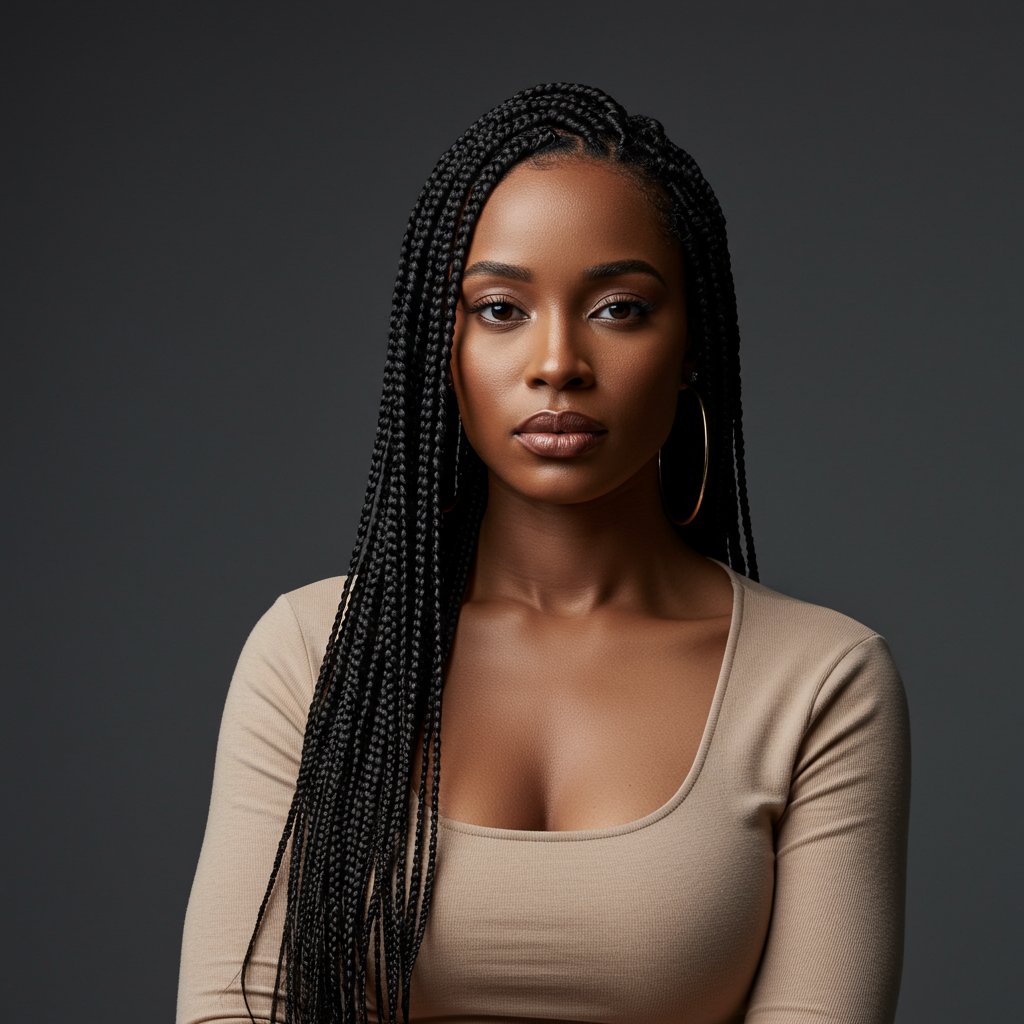
From their pain-free installation and immediate styling freedom to their undeniable hair health benefits, knotless braids check all the boxes. By following a diligent maintenance routine and choosing an experienced stylist, you can ensure your hair not only looks beautiful but also thrives underneath. If you're seeking a protective style that marries elegance with hair care, look no further. Knotless braids are more than just a trend; they are a testament to the beauty and innovation within the natural hair community.

